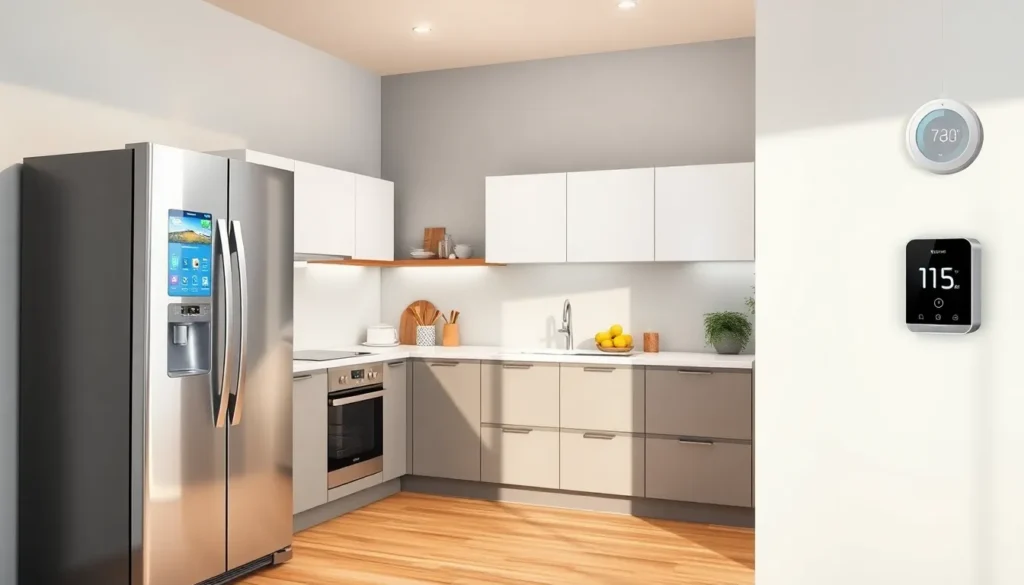Table of Contents
ToggleIn a world where your toaster might soon have more personality than your neighbor, IoT language support is the unsung hero behind the scenes. Imagine a smart home that not only listens but also understands your quirky requests. From asking your fridge to remind you of that leftover pizza to having your thermostat chat about the weather, effective language support is crucial for seamless communication between devices.
Overview of IoT Language Support
IoT language support plays a crucial role in the interaction between users and smart devices. Devices equipped with advanced language capabilities can understand commands and contextual information. Enhanced communication creates a seamless experience in smart home environments.
By utilizing natural language processing (NLP), IoT systems can interpret user intent accurately. Examples include voice-activated assistants managing tasks and appliances responding to specific instructions. These systems allow for hands-free operation, reducing the need for manual controls.
Language support also extends to various languages, accommodating diverse user bases. Multilingual capabilities enhance user experiences for households with members speaking different languages. Such flexibility ensures that everyone can engage with the technology intuitively.
Furthermore, continuous improvement in machine learning algorithms boosts language understanding over time. Smart appliances learn from user interactions, refining their responses and adapting to individual preferences. This allows for personalized experiences tailored to user habits.
Integration with third-party services enhances IoT language support further. Connections with platforms such as Google Assistant or Amazon Alexa enable expansive command recognition and functionality. These integrations facilitate a broader range of tasks, from managing schedules to accessing real-time information.
Robust IoT language support transforms everyday interactions into personalized and efficient experiences. Through its evolving capabilities, language support will significantly redefine home automation.
Importance of IoT Language Support
IoT language support is vital for creating an efficient smart home environment. It enhances user-device interactions, enabling seamless communication.
Enhancing Communication Between Devices
Effective language support facilitates better interactions among devices. Smart appliances can share information and coordinate actions without extensive user input. Devices like smart refrigerators and ovens can autonomously optimize tasks, such as suggesting recipes based on available ingredients. Natural language processing technologies enhance this capability, ensuring accurate interpretation of commands across various devices. Each device learns from user preferences, creating a more harmonious network that anticipates needs and simplifies daily routines. Overall, improved communication among IoT devices drives efficiency and enhances the user experience.
Simplifying Development for Programmers
IoT language support simplifies the development process for programmers. Standardized language frameworks allow developers to create versatile applications without needing to address each device’s specific communication method. By using common protocols, programmers can ensure multiple devices understand user commands easily. This commonality reduces development time and eliminates compatibility issues across diverse platforms. Furthermore, the integration of NLP tools streamlines the coding process, providing ready-made libraries and resources. Each benefit contributes to more efficient workflows, empowering developers to focus on innovative solutions within IoT ecosystems.
Popular Programming Languages for IoT
Several programming languages are widely used in IoT development due to their versatility and strong community support.
Python
Python stands out for its simplicity and readability, making it a preferred choice among developers. It supports various IoT frameworks like MicroPython and CircuitPython, which streamline the coding process on microcontrollers. This language enhances rapid prototyping, allowing developers to test and iterate quickly. A rich library ecosystem provides tools for data analysis and machine learning, very beneficial for IoT applications. Additionally, Python’s active community offers robust support, ensuring developers find resources and assistance when needed.
JavaScript
JavaScript excels in building interactive web-based interfaces for IoT devices. It enables seamless communication between devices and web applications using frameworks such as Node.js. Many developers appreciate its event-driven architecture, making it efficient for real-time data processing. With the rise of platforms like Johnny-Five, JavaScript extends to hardware programming for robotics and IoT projects. The popularity of JavaScript ensures a vast pool of knowledge and libraries that developers can leverage for their IoT solutions.
C and C++
C and C++ provide low-level programming capabilities crucial for IoT systems. These languages ensure efficient resource management, which is vital for devices with limited processing power. High-performance requirements often necessitate the use of these languages to achieve maximum system responsiveness. Libraries such as Arduino and Raspberry Pi facilitate programming with C/C++, empowering developers to interact directly with hardware. Numerous applications in real-time computing benefit from the speed and control these languages offer, making them indispensable in the IoT space.
Java
Java contributes to IoT development with its platform independence and scalability. Many developers rely on this language for building robust applications that run on various devices. The Java Virtual Machine (JVM) allows code to execute on different platforms without modification, fostering cross-device compatibility. Popular frameworks like Java ME and IoTivity support the creation of connected devices efficiently. With a strong emphasis on security and stability, Java remains a reliable choice for long-term IoT projects that require consistent performance across diverse environments.
Emerging Trends in IoT Language Support
Emerging trends in IoT language support reflect significant advancements that enhance user interaction with connected devices.
Support for Low-Code and No-Code Solutions
Low-code and no-code platforms empower users to develop IoT applications without extensive programming knowledge. They enable rapid solution deployment through intuitive interfaces, allowing individuals to focus on application logic rather than coding intricacies. Visual development tools facilitate the integration of IoT devices, bridging gaps between technical and non-technical users. Multi-device compatibility enhances user experience by simplifying complex workflows. This shift democratizes IoT development, encouraging innovation across various sectors and fostering a broader adoption of connected technologies.
Rise of Domain-Specific Languages
Domain-specific languages (DSLs) are gaining traction in the IoT ecosystem, addressing the unique needs of specific industries. Tailored syntax and functionality allow developers to streamline programming for particular applications, improving efficiency and precision. DSLs facilitate communication between devices and services, ensuring interoperability and optimized performance. They also minimize the learning curve for new developers by providing context-specific tools and resources. As industries embrace IoT solutions, the focus on DSLs enhances collaboration and accelerates development timelines, fostering a more responsive IoT landscape.
Conclusion
IoT language support is revolutionizing how users interact with smart devices. By enabling natural language processing and accommodating multiple languages, it creates a more intuitive experience for everyone. As technology advances, the integration of machine learning and third-party services will only enhance these interactions, making them more personalized and efficient.
The emergence of low-code platforms and domain-specific languages further democratizes IoT development, allowing a wider range of users to create innovative solutions. This trend fosters collaboration across industries and accelerates the adoption of connected technologies. Ultimately, robust language support is key to unlocking the full potential of IoT, transforming everyday life into a seamless and engaging experience.








